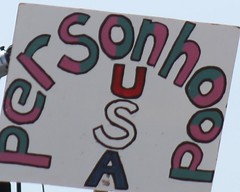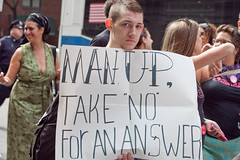#Sidney's Picks: The Best of the Week's News

- Sidney’s a 124-year-old guy who knows better than to take sides in the breast-vs.-bottle battle royale, but he’s dismayed to see formula companies marketing like drug dealers. Four words you don’t want to hear around babies: “The first hit’s free.” Formula companies offer their product to the WIC program for low-income women and children at a deep discount. The U.S. taxpayer pays about $627 million a year for formula that would retail for $2 billion. According to a new report by Molly M. Ginty of Women’s eNews, reported in partnership with the Investigative Fund of the Nation Institute, this is a shrewd marketing ploy for the formula makers. WIC formula vouchers don’t last the entire month. So, the vouchers establish brand loyalty, and then low-income moms have to make up the difference with retail-priced formula.
- The Department of Justice has abandoned its proposal to allow federal agencies to lie and say that FOIA‘d records don’t exist, when they do. Kudos to Jennifer LaFleur of ProPublica for sounding the alarm and spearheading the opposition.
- The War on Drugs is getting more warlike than ever, James Poulos notes in Foreign Policy. He points to an article from last week’s New York Times about DEA paramilitary squads exchanging fire with drug traffickers in Latin America. These squads are known as Foreign-deployed Advisory Support Teams (FAST), the fruit of a George W. Bush-era program to “investigate” drug traffickers linked to the Taliban. The Obama administration has since deployed these teams well beyond Afghanistan.
- Three NYPD officers will be disciplined for violently and baselessly arresting two black officials–City Councilman Jumaane Williams and Kirsten John Foy of the Public Advocates Office–at the West Indian Day Parade, John Del Signore reports in Gothamist.
[Photo credit: Wander Mule, Creative Commons.]









